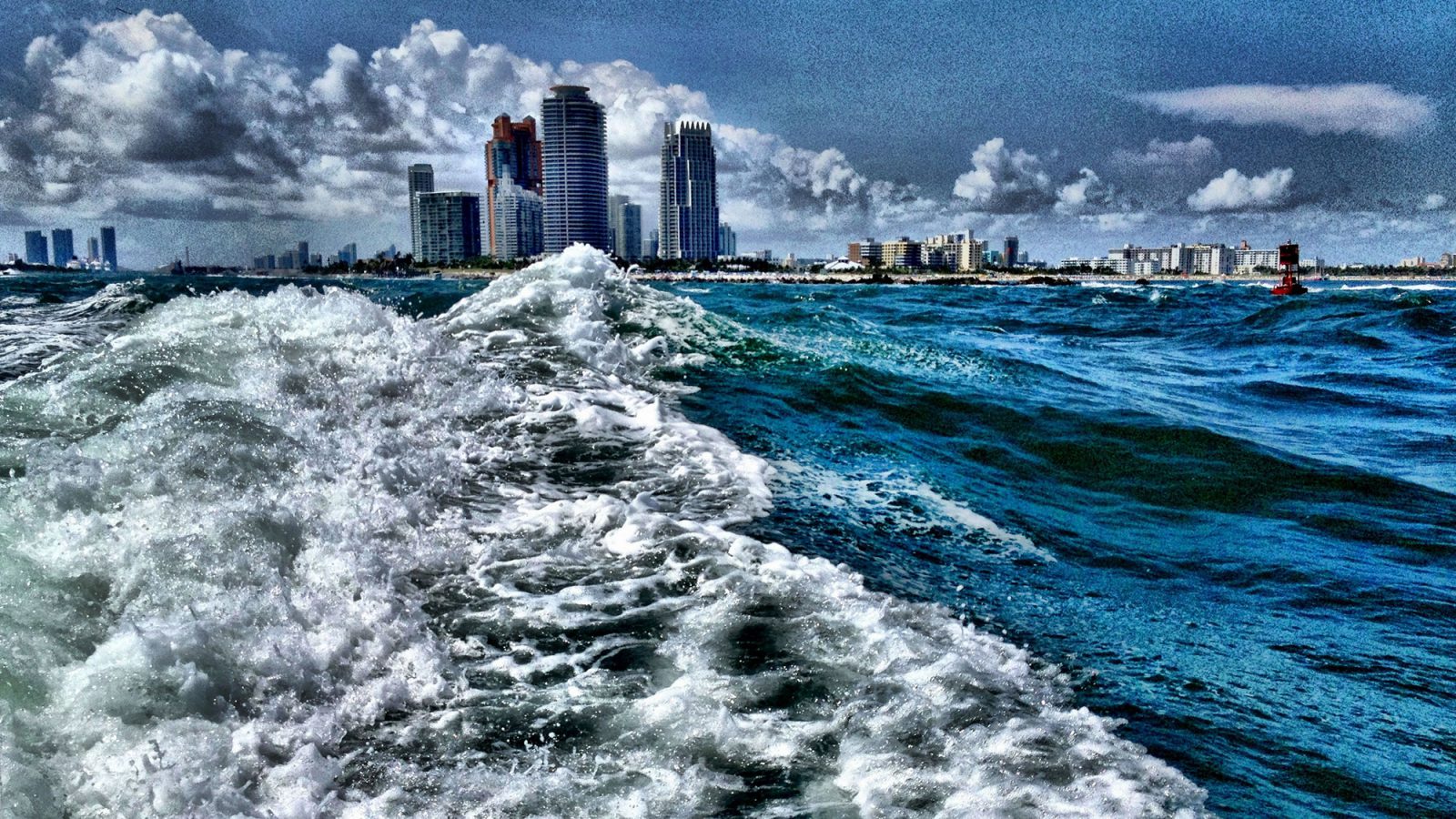Just how bad is climate change going to be? Well, that depends on when/if we stop burning fossil fuels, but a new map from Climate Central shows how rising sea levels will effect hundred of U.S. cities in the future.
Take, for instance, Miami. The image on the right shows what the Miami coastline will look like with aggressive reductions in carbon emissions. And on the left? That’s the future if we don’t do anything, and all that blue is water that used to be land. Grab your snorkel and move to high ground, Miami! You’re fucked.
[protected-iframe id=”7e6a51d4d37f470f04e78047f889e862-5104299-30178935″ info=”http://choices.climatecentral.org/widget.html?utm_source=Grist&utm_medium=embed&utm_campaign=SSMC-Map#12/25.7749/-80.1980?compare=scenarios&carbon-end-yr=2100&scenario-a=unchecked&scenario-b=extreme-cuts” style=”border:0px;scrolling:no;width:660px;height:450px”]
Not all cities are equally vulnerable. While low-lying Miami is up climate creek without a paddle, Seattle of the future doesn’t look so bad, even if we all leave our cars running all day just cause we like the fumes.
[protected-iframe id=”47de59e33cae5948327cde73b0683f52-5104299-30178935″ info=”http://choices.climatecentral.org/widget.html?utm_source=Grist&utm_medium=embed&utm_campaign=SSMC-Map#12/47.6036/-122.3294?compare=scenarios&carbon-end-yr=2100&scenario-a=unchecked&scenario-b=extreme-cuts” style=”border:0px;scrolling:no;width:660px;height:450px”]
The map was built using data from a new study in the journal Proceedings of the National Academy of Sciences. The study examined “lock-in dates beyond which the cumulative effects of carbon emissions likely commit them to long-term sea-level rise that could submerge land under more than half of the city’s population.” In other words, the point of no return.
“In our analysis, a lot of cities have futures that depend on our carbon choices but some appear to be already lost,” Ben Strauss, vice president for sea level and climate impacts at Climate Central, told AFP. “And it is hard to imagine how we could defend Miami in the long run.”
Projections for New Orleans are even more dire. “New Orleans is a really sad story,” Strauss told the AFP. “It is a lot worse looking than Miami.”
[protected-iframe id=”52a17e836b255593b3f0604ea2d87822-5104299-30178935″ info=”http://choices.climatecentral.org/widget.html?utm_source=Grist&utm_medium=embed&utm_campaign=SSMC-Map#12/29.9537/-90.0777?compare=scenarios&carbon-end-yr=2100&scenario-a=unchecked&scenario-b=extreme-cuts” style=”border:0px;scrolling:no;width:660px;height:450px”]
We don’t know exactly when these scenarios will play out, but according to this new study, for cities like Miami and New Orleans, it’s already far too late.
Editor’s note: Ben Strauss is a member of Grist’s board of directors.



